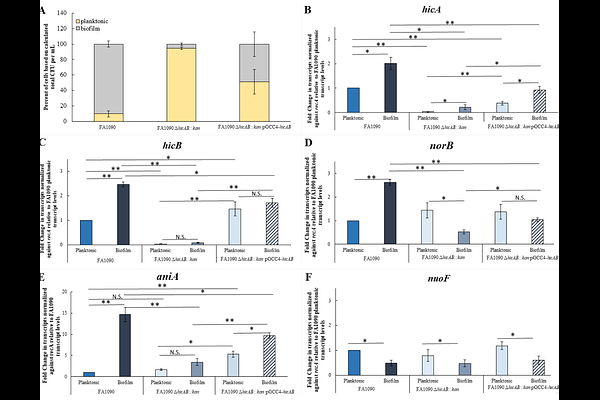Gentamicin induction of the gonococcal hicAB toxin-antitoxin encoding system and 2 impact on gene expression influencing biofilm formation and in vivo fitness in a strain specific manner

Gentamicin induction of the gonococcal hicAB toxin-antitoxin encoding system and 2 impact on gene expression influencing biofilm formation and in vivo fitness in a strain specific manner
Holley, C. L.; Dhulipala, V.; Le Van, A.; Balthazar, J. T.; Oliver, V. J.; Jerse, A. E.; Shafer, W. M.
AbstractThe continued emergence of Neisseria gonorrhoeae (Ng) isolates resistant to first-line antibiotics has focused efforts on understanding how alternative therapies such as expanded use of gentamicin (Gen) might counteract this global public health problem. Focusing on Gen as a viable alternative antibiotic for treatment of gonorrheal infections, we used RNA-Seq to determine if sub-lethal levels of Gen might impact gonococci on a transcriptional level. We found that sub-lethal Gen levels altered expression of 23 genes in Ng strain FA19. Many of the differentially regulated genes were associated with known stress responses elaborated by Ng under different harmful conditions. We found that the transcripts of the hicAB operon, which encodes a putative HicA-HicB toxin-antitoxin system that is encoded by tandem genes with the prophage Ngo {varphi}3, were increased in response to Gen. While loss of hicAB did not impact gonococcal susceptibility to a variety of antimicrobial agents or harmful environmental conditions it did reduce biofilm formation in Ng strains F62, FA1090, WHO X and CDC200 but not that of strain FA19. Further, in strain F62, but not FA19, loss of hicAB reduced the in vivo fitness of Ng during experimental lower genital tract infection of female mice. Further, we found that expression of hicAB can influence levels of the norB transcript, which encodes the nitrate reductase shown previously to be upregulated in gonococcal biofilms. We propose that sub-lethal Gen has the capacity to influence gonococcal pathogenesis through the action of the HicAB toxin-antitoxin system.